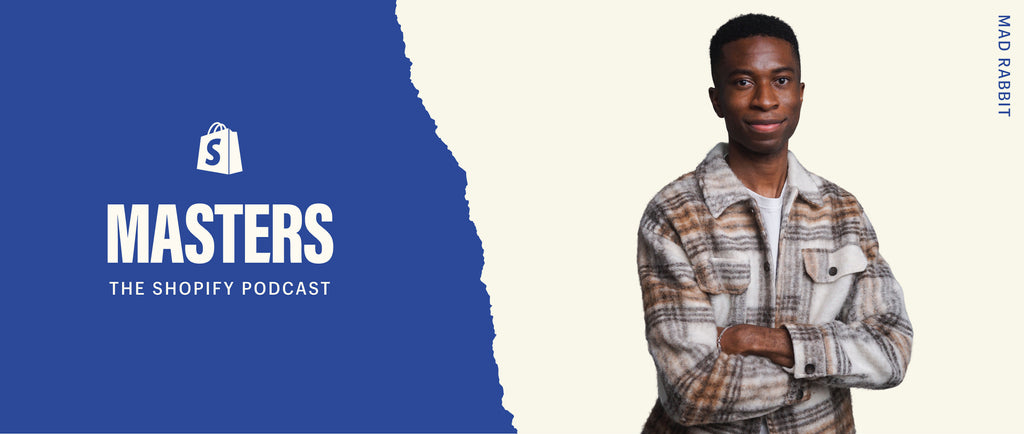Starting an ecommerce business is a popular alternative to the traditional college student jobs these days, at least in Selom Agbitor’s fraternity. That’s where he caught the entrepreneurship bug after being inspired by his fraternity brothers who were making money dropshipping.
“I didn’t really know what dropshipping was, but it was intriguing to not have to work physical jobs at a college bar or, like, in the cafeteria or in the store,” Selom says.
One summer, Selom and his friend Oliver Zak decided to start their own business dropshipping swimsuits. That’s how they learned the ins and outs of ecommerce—everything from running online ad campaigns to providing customer support to growing a social media account.
By the end of the summer, the partners sold their dropshipping business, armed with the knowledge and capital to finally launch their own direct-to-consumer (DTC) brand.Mad Rabbitis a tattoo aftercare company that sells balms and lotions that help heal and protect skin after getting inked.
Mad Rabbit went from senior year side hustle to a $56 million business in just four years. Selom and Oliver even had the opportunity to pitch onShark Tank, where Mark Cuban invested in the company. Here, Selom shares his insights on growing a business with limited capital and while balancing school or work.
Tapping into free internet resources
Selom and Oliver are self-taught entrepreneurs. They searched the internet for answers and learned to identify the best business resources, including experts offering courses online.
Selom found it was almost always cheaper to learn to do certain tasks than to pay someone else to do them. “We taught ourselves Facebook, Instagram, and Google Ads because it would be expensive to pay an agency or pay someone a percentage of ad spend to run those ads for you,” Selom says.
Scoping out the competition
Selom didn’t even have a tattoo when he decided to start Mad Rabbit with his co-founder, but he did do somecompetitive analysis. He wasn’t impressed with the existing ads in the space and thought Mad Rabbit would have an advantage as a DTC company, instead of selling wholesale like their competitors. “I was like, ‘OK, we can do all of these things better than who’s currently in this space, so why not give it a shot?’” he says.

Gauging interest in your product
Launching a DTC brand was more complicated than a dropshipping venture. There were significantly more costs, due to sourcing the ingredients for their first product. Plus, the plan was to start manufacturing it themselves from Oliver’s own apartment.
“We started running ads before we even had any actual physical product, because I wanted to make sure that there was aproduct-market fitbefore we spent time cooking tattoo balm in Oliver’s apartment,” Selom says. “Within the first week of running ads, orders started coming through.” That was enough evidence for the founders to launch Mad Rabbit. They started skipping class one day per week to make the balm, and often spent weekends fulfilling orders and managingcustomer service.

Alt text: Selom Agbitor and Oliver Zak pitch their company, Mad Rabbit, onShark Tank
Imitation is flattery
Many of Mad Rabbit’s first customers came from paid ads and the brand’ssocial media channels.
Instead of following social media trends, Selom and Oliver tried to be creative with their content from the start. “If you’re reactive, you’re just waiting for someone else to do something for you to copy. So we tried our best to make sure that whatever we were putting out there was a new concept,” Selom says. He felt they succeeded in their social media marketing when other brands started copying their posts.
Letting your DTC customers spread the word
Mad Rabbit started as DTC before jumping into wholesale. “It was more effective and much cheaper to acquire the customers first,” Selom says. Many of Mad Rabbit’s customers would tell their own tattoo artists about the products, so by the time Mad Rabbit started looking for wholesale customers, it hardly needed an introduction.
Mad Rabbit has now expanded its collection to nearly 10 products, including the tattoo balm, numbing cream, soothing gel, and sunscreen. To learn more about Mad Rabbit’s cost-saving strategies and Selom’s journey, listen to his full interview onShopify Masters.

